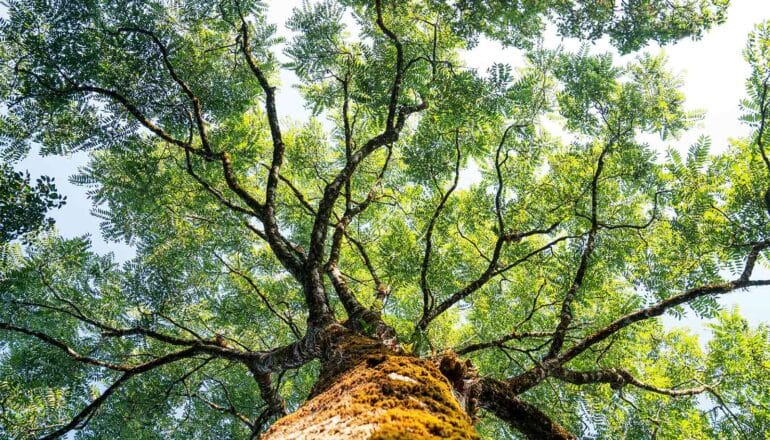
Researchers have discovered that artificial intelligence can simulate tree growth and shape.
The DNA molecule encodes both tree shape and environmental response in one tiny, subcellular package. In work inspired by DNA, Bedrich Benes, professor of computer science at Purdue University, and his associates developed novel AI models that compress the information required for encoding tree form into a megabyte-sized neural model.
After training, the AI models encode the local development of trees that can be used to generate complex tree models of several gigabytes of detailed geometry as an output.
In two papers published in ACM Transactions on Graphics of the Association for Computing Machinery and IEEE Transactions on Visualizations and Computer Graphics, Benes and his coauthors describe how they created their tree-simulation AI models.
“The AI models learn from large data sets to mimic the intrinsic discovered behavior,” Benes says.
Non-AI-based digital tree models are quite complicated, involving simulation algorithms that consider many mutually affecting nonlinear factors. Such models are needed in endeavors such as architecture and urban planning, as well as in the gaming and entertainment industries, to make designs more realistically appealing to their potential clients and audiences.
After working with AI models for nearly 10 years, Benes expected them to be able to significantly improve the existing methods for digital tree twins. The size of the models was surprising, however.
“It’s complex behavior, but it has been compressed to rather a small amount of data,” he says.
The researchers used deep learning, a branch of machine learning within AI, to generate growth models for maple, oak, pine, walnut, and other tree species, both with and without leaves. Deep learning involves developing software that trains AI models to perform specified tasks through linked neural networks that attempt to mimic certain functionalities of the human brain.
“Although AI has become seemingly pervasive, thus far it has mostly proved highly successful in modeling 3D geometries unrelated to nature,” Benes says. These include endeavors related to computer-aided design and improving algorithms for digital manufacturing.
“Getting a 3D geometry vegetation model has been an open problem in computer graphics for decades,” states Benes and his coauthors in their ACM Transactions paper. Although some approaches to simulating biological behaviors are improving, they note, “simple methods that would quickly provide many 3D models of real trees are not readily available.”
Experts with biological expertise have traditionally developed tree-growth simulations. They understand how trees interact with environmental conditions. Understanding these complicated interactions depends upon characteristics bestowed upon the tree by its DNA. These include branching angles, which are much larger for pines than for oaks, for example. The environment, meanwhile, dictates other characteristics that can result in the same type of tree grown under two different conditions displaying completely different shapes.
“Decoupling the tree’s intrinsic properties and its environmental response is extremely complicated,” Benes says. “We looked at thousands of trees, and we thought, ‘Hey, let AI learn it.’ And maybe we can then learn the essence of tree form with AI.”
Scientists typically build models based on hypotheses and observations of nature. As models created by humans, they have reasoning behind them. The researchers’ models generalize behavior from several thousand trees’ worth of input data that became encoded within the AI. Then the researchers validate that the models behave the way the input data behave.
The AI tree models’ weakness is that they lack training data that describes real-world 3D tree geometry. “In our methods, we needed to generate the data. So our AI models are not simulating nature. They are simulating tree developmental algorithms,” Benes says. He aspires to reconstruct 3D geometry data from real trees inside a computer.
“You take your cellphone, take a picture of a tree, and you get a 3D geometry inside the computer. It could be rotated. Zoom in. Zoom out,” he says. “This is next. And it’s perfectly aligned with the mission of digital forestry.”
Additional coauthors of the ACM Transactions on Graphics paper are from Purdue. Coauthors of the IEEE Transactions on Visualization and Computer Graphics paper are from Purdue and Kiel University, Germany.
Source: Purdue University
The post AI simulates how trees grow appeared first on Futurity.
from Futurity https://ift.tt/tnIqdjD
No comments:
Post a Comment